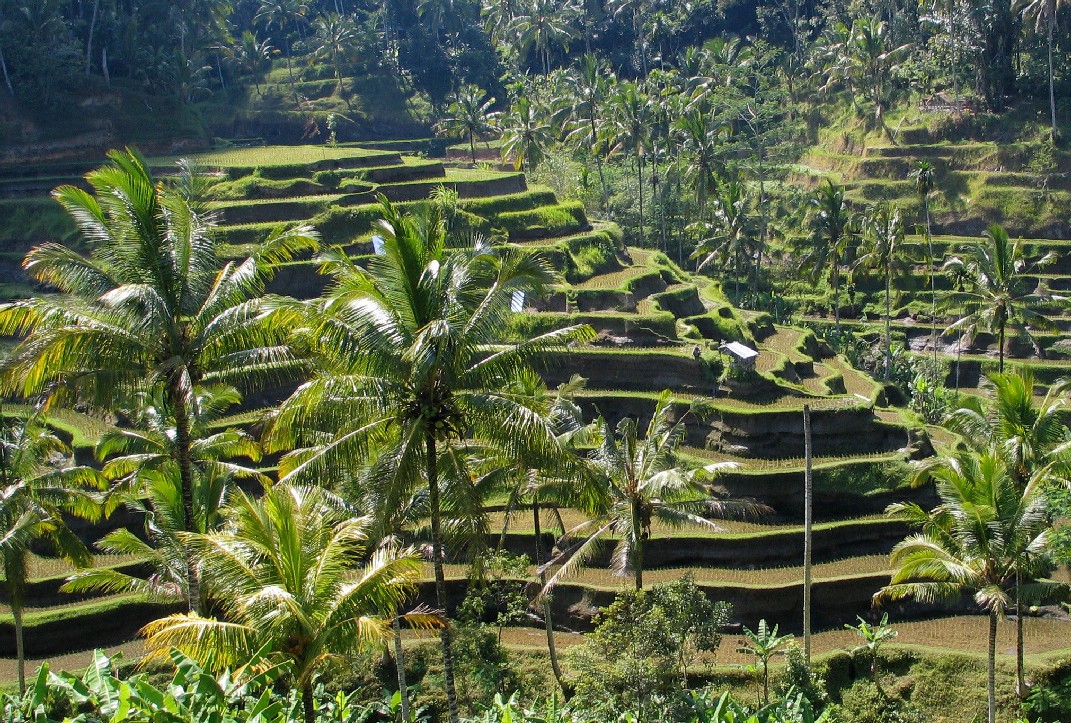|
Pūjā
() is a worship ritual performed by Hindus to offer devotional homage and prayer to one or more deities, to host and honour a guest, or to spiritually celebrate an event. It may honour or celebrate the presence of special guests, or their memories after they die. The word ''puja'' is roughly translated into English as 'reverence, honour, homage, adoration, or worship'.पूजा ''Sanskrit Dictionary'', Germany (2009) ''Puja'' (পুজো / পুজা in Bangla), the loving offering of light, flowers, and water or food to the divine, is the essential ritual of Hinduism. For the worshipper, the divine is visible in the image, and the divinity sees the worshipper. The interaction b ... [...More Info...] [...Related Items...] OR: [Wikipedia] [Google] [Baidu] |
Lakshmi Puja
Lakshmi Puja or Lokkhi Pujo ( Devnagari: लक्ष्मी पूजा, Bengali/Assamese: লক্ষ্মী পূজা, Odia: ଲକ୍ଷ୍ମୀ ପୂଜା, Romanised: Lakṣmī Pūjā/ Loķhī Pūjō) is a Hindu occasion for the veneration of Lakshmi, the Goddess of Prosperity and the Supreme Goddess of Vaishnavism. The occasion is celebrated on the amavasya (new moon day) in the Vikram Samvat Hindu calendar month of Ashwayuja (according to the amanta tradition) or Kartika (according to the purnimanta tradition), on the third day of Deepavali ( Tihar) in Nepal and most parts of India. In Odisha, Assam, Bengal this puja is celebrated five days after Vijaya Dashami. Lakshmi, the Goddess of Wealth and Prosperity, visits her devotees and bestows good fortune and her blessings upon them. To welcome the Goddess, devotees clean their houses, decorate them with finery and lights, and prepare sweet treats and delicacies as offerings. Devotees believe that the hap ... [...More Info...] [...Related Items...] OR: [Wikipedia] [Google] [Baidu] |
Durga Puja
Durga Puja (ISO 15919, ISO: , ), also known as Durgotsava or Shaaradotsava, is an annual festival originating in the Indian subcontinent which pays homage to the Hinduism, Hindu goddess Durga, and is also celebrated because of Durga's victory over Mahishasura. It is the biggest festival of Bengali Hindus and the Indian state of West Bengal. Durga Puja in Kolkata, Durga Puja as celebrated in Kolkata, West Bengal's capital city, was inscribed on the UNESCO Intangible Cultural Heritage Lists, intangible cultural heritage list of UNESCO in December 2021. In addition to West Bengal, Hindu Bengalis are native to Bangladesh and Indian state of Tripura, Barak Valley, Assam (Barak Valley), Jharkhand and Kosi-Seemanchal, Bihar (Kosi-Seemanchal); Therefore, Durga Puja is performed with great devotion in these places as well. The festival is observed in the Indian calendar in the month of Ashwin, Ashvin, which corresponds to September–October in the Gregorian calendar. Durga Puja is ... [...More Info...] [...Related Items...] OR: [Wikipedia] [Google] [Baidu] |
Kali Puja
Kali Puja (ISO: ), also known as Shyama Puja or Mahanisha Puja, is a festival originating from the Indian subcontinent, dedicated to the Hindu goddess Kali. It is celebrated on the new moon day (Dipannita Amavasya) of the Hindu calendar month of Ashwayuja (according to the amanta tradition) or Kartika (according to the purnimanta tradition). The festival is especially popular in the region of West Bengal, and other places like Mithila, Jharkhand Jharkhand (; ) is a States and union territories of India, state in East India, eastern India. The state shares its border with the states of West Bengal to the east, Chhattisgarh to the west, Uttar Pradesh to the northwest, Bihar to the north ..., Odisha, Assam, and Tripura, as well as the town of Titwala in Maharashtra, along with the neighbouring country of Bangladesh. History Description of Kali in Sanskrit texts during the late medieval period point to her growing popularity alongside other goddesses. She appears in the ... [...More Info...] [...Related Items...] OR: [Wikipedia] [Google] [Baidu] |
Yajna
In Hinduism, ''Yajna'' or ''Yagna'' (, Help:IPA/Sanskrit, [jɐd͡ʒɲə], ) also known as Hawan, is a ritual done in front of a sacred fire, often with mantras. Yajna has been a Vedas, Vedic tradition, described in a layer of Vedic literature called Brahmanas, as well as Yajurveda. The tradition has evolved from offering oblations and libations into sacred fire to symbolic offerings in the presence of sacred fire (Agni). Yajna rituals-related texts have been called the ''Karma-kanda'' (ritual works) portion of the Vedic literature, in contrast to the ''Jnana-kanda'' (knowledge) portion found in the Vedic Upanishads. The proper completion of Yajna-like rituals was the focus of Mimansa school of Hindu philosophy. Yajna have continued to play a central role in a Hindu's rites of passage, such as weddings. Modern major Hindu temple ceremonies, Hindu community celebrations, or monastic initiations may also include Vedic Yajna rites, or alternatively be based on Āgama (Hinduism), A ... [...More Info...] [...Related Items...] OR: [Wikipedia] [Google] [Baidu] |
Agni
Agni ( ) is the Deva (Hinduism), Hindu god of fire. As the Guardians of the directions#Aṣṭa-Dikpāla ("Guardians of Eight Directions"), guardian deity of the southeast direction, he is typically found in southeast corners of Hindu temples. In the Hindu cosmology, classical cosmology of Hinduism, fire (''Agni'') is one of the five inert impermanent elements (''Pancha Bhuta, Pañcabhūtá'') along with sky (''Ākāśa''), water (''Apas''), air (''Vāyu'') and earth (''Pṛthvī''), the five combining to form the empirically perceived material existence (''Prakṛti''). In the Vedas, Agni is a major and most invoked god along with Indra and Soma (deity), Soma. Agni is considered the mouth of the gods and goddesses and the medium that conveys offerings to them in a ''homa (ritual), homa'' (votive ritual). He is conceptualized in ancient Hindu texts to exist at three levels, on earth as fire, in the atmosphere as lightning, and in the sky as the sun. This triple presence accords ... [...More Info...] [...Related Items...] OR: [Wikipedia] [Google] [Baidu] |
Āgama (Hinduism)
The Agamas (Devanagari: , IAST: ) are a collection of several Tantric literature and scriptures of Hindu schools. Julius Lipner (2004), Hinduism: the way of the banyan, in The Hindu World (Editors: Sushil Mittal and Gene Thursby), Routledge, , pages 27–28 The term literally means tradition or "that which has come down", and the Agama texts describe cosmology, epistemology, philosophical doctrines, precepts on meditation and practices, four kinds of yoga, mantras, temple construction, deity worship and ways to attain sixfold desires. These canonical texts are in Sanskrit and Tamil. The three main branches of Agama texts are Shaiva, Vaishnava and Shakta. The Agamic traditions are sometimes called Tantrism, although the term "Tantra" is usually used specifically to refer to Shakta Agamas.Mariasusai Dhavamony (1999), Hindu Spirituality, Gregorian University and Biblical Press, , pages 31–34 with footnotes The Agama literature is voluminous, and includes 28 Shaiva Agamas, ... [...More Info...] [...Related Items...] OR: [Wikipedia] [Google] [Baidu] |
Prasada
200px, ''Naivedya'' offered to Sri Maya Chandrodaya Mandir in Mayapur, India">Mayapur.html" ;"title="Sri Maya Chandrodaya Mandir, Mayapur">Sri Maya Chandrodaya Mandir in Mayapur">Sri Maya Chandrodaya Mandir, Mayapur">Sri Maya Chandrodaya Mandir in Mayapur, India Prasāda (, Sanskrit: प्रसाद), prasad or prasadam is a religious offering in Hinduism. Most often ''Prasada'' is vegetarian food especially cooked for devotees after praise and thanksgiving to a god. ''Mahaprasada'' (also called ''bhandarā''),Pashaura Singh, Louis E. Fenech, 2014The Oxford Handbook of Sikh Studies/ref> is the consecrated food offered to the deity in a Hindu temple which is then distributed and partaken by all the devotees regardless of any orientation.Chitrita Banerji, 2010Eating India: Exploring the Food and Culture of the Land of SpicesSubhakanta Behera, 2002Construction of an identity discourse: Oriya literature and the Jagannath lovers (1866–1936) pp. 140–177.Susan Pattinson, 2011Th ... [...More Info...] [...Related Items...] OR: [Wikipedia] [Google] [Baidu] |
Bali
Bali (English:; Balinese language, Balinese: ) is a Provinces of Indonesia, province of Indonesia and the westernmost of the Lesser Sunda Islands. East of Java and west of Lombok, the province includes the island of Bali and a few smaller offshore islands, notably Nusa Penida, Nusa Lembongan, and Nusa Ceningan to the southeast. The provincial capital, Denpasar, is the List of Indonesian cities by population, most populous city in the Lesser Sunda Islands and the second-largest, after Makassar, in Eastern Indonesia. Denpasar metropolitan area is the extended metropolitan area around Denpasar. The upland town of Ubud in Greater Denpasar is considered Bali's cultural centre. The province is Indonesia's main tourist destination, with a significant rise in Tourism in Bali, tourism since the 1980s, and becoming an Indonesian area of overtourism. Tourism-related business makes up 80% of the Bali economy. Bali is the only Hinduism in Indonesia, Hindu-majority province in Indonesia, ... [...More Info...] [...Related Items...] OR: [Wikipedia] [Google] [Baidu] |
Hyang
''Hyang'' (Kawi language, Kawi, Sundanese language, Sundanese, Javanese language, Javanese, and Balinese language, Balinese) is a representation of the King of the gods, supreme being, in ancient Mythology of Indonesia, Java and Bali mythology. The spiritual entity can be either considered Divinity, divine or ancestral. The reverence for this spiritual entity can be found in the folk religions of Java and Bali, such as the Sunda Wiwitan ( Sundanism or Cigugur Sundanism), Kejawen ( non-monotheistic Javanism), Kapitayan ( monotheistic Javanism), and Balinese Hinduism, Gama Tirta ( Balinism). The realm where ''Hyang'' resides is called the ''Kahyangan'', which is an Old Javanese term that means "the abode of ''Hyang''", "part of ''Hyang''", or "heaven". The Old Sundanese language, Old Sundanese manuscript Sanghyang Siksa Kandang Karesian, has stated that ''Hyang'' can be interpreted as "Omnipotence". Similarly, in the highest Sunda Wiwitan Spirituality, ''Hyang'' is also referred to ... [...More Info...] [...Related Items...] OR: [Wikipedia] [Google] [Baidu] |
Hindu
Hindus (; ; also known as Sanātanīs) are people who religiously adhere to Hinduism, also known by its endonym Sanātana Dharma. Jeffery D. Long (2007), A Vision for Hinduism, IB Tauris, , pp. 35–37 Historically, the term has also been used as a geographical, cultural, and later religious identifier for people living in the Indian subcontinent. It is assumed that the term ''"Hindu"'' traces back to Avestan scripture Vendidad which refers to land of seven rivers as Hapta Hendu which itself is a cognate to Sanskrit term ''Sapta Sindhuḥ''. (The term ''Sapta Sindhuḥ'' is mentioned in Rig Veda and refers to a North western Indian region of seven rivers and to India as a whole.) The Greek cognates of the same terms are "''Indus''" (for the river) and "''India''" (for the land of the river). Likewise the Hebrew cognate ''hōd-dū'' refers to India mentioned in Hebrew BibleEsther 1:1. The term "''Hindu''" also implied a geographic, ethnic or cultural identifier for ... [...More Info...] [...Related Items...] OR: [Wikipedia] [Google] [Baidu] |
Rigveda
The ''Rigveda'' or ''Rig Veda'' (, , from wikt:ऋच्, ऋच्, "praise" and wikt:वेद, वेद, "knowledge") is an ancient Indian Miscellany, collection of Vedic Sanskrit hymns (''sūktas''). It is one of the four sacred canonical Hindu texts (''śruti'') known as the Vedas. Only one Shakha of the many survive today, namely the Shakala Shakha, Śakalya Shakha. Much of the contents contained in the remaining Shakhas are now lost or are not available in the public forum. The ''Rigveda'' is the oldest known Vedic Sanskrit text. Its early layers are among the oldest extant texts in any Indo-European language. Most scholars believe that the sounds and texts of the ''Rigveda'' have been orally transmitted with precision since the 2nd millennium BCE, through Indian mathematics#Styles of memorisation, methods of memorisation of exceptional complexity, rigour and fidelity, though the dates are not confirmed and remain contentious till concrete evidence surfaces. Philolog ... [...More Info...] [...Related Items...] OR: [Wikipedia] [Google] [Baidu] |
Sandalwood
Sandalwood is a class of woods from trees in the genus ''Santalum''. The woods are heavy, yellow, and fine-grained, and, unlike many other aromatic woods, they retain their fragrance for decades. Sandalwood oil is extracted from the woods. Sandalwood is often cited as one of the most expensive woods in the world. Both the wood and the oil produce a distinctive fragrance that has been highly valued for centuries. Consequently, some species of these slow-growing trees have suffered over-harvesting in the past. Nomenclature The nomenclature and the taxonomy of the genus are derived from this species' historical and widespread use. Etymologically it is ultimately derived from Sanskrit ''Chandana'' (''čandana''), meaning "wood for burning incense" and related to ''candrah'', "shining, glowing" and the Latin , to shine or glow. It arrived in English via Late Greek, Medieval Latin and Old French in the 14th or 15th century. True sandalwoods Sandalwoods are medium-sized Parasitic pl ... [...More Info...] [...Related Items...] OR: [Wikipedia] [Google] [Baidu] |








